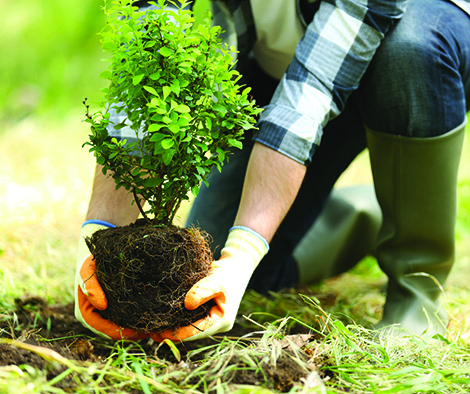By Melinda Myers
National Arbor Day, an annual observance in April that was first celebrated in 1872, recognizes the important role trees play in our environment and, more recently, their impact on our mental and emotional well-being.
These long-lived members of our landscapes and communities help combat flooding, shade our homes, reduce energy use, and remove pollutants from the air. According to the U.S. Forest Service, properly placed trees around buildings can help reduce air conditioning requirements by 30 percent and save between 20 to 50 percent on energy used for heating.
Trees lessen the impact of stormwater by intercepting rainfall and transpiring moisture from the soil into the air. Their canopies intercept and slow rainfall’s velocity before it hits the ground. This reduces runoff and erosion, allowing more water to be absorbed by the soil instead of overwhelming our storm sewers.
Spending time among trees also helps boost our immune system. Studies reveal tree-filled landscapes help decrease domestic conflict, as well as aggression and violence at schools. A mindful walk through the woods, known as forest bathing, helps reduce blood pressure and stress. It increases focus and energy levels and improves sleep.
When planting new trees, make sure to select one that will fit and thrive in the space and conditions. Look for ones that provide multiple seasons of beauty and support birds and pollinators that deliver the many other environmental benefits.
Select a planting location away from overhead and underground utilities to avoid future conflicts. Always call 811, a free underground utility locating service, at least three business days before putting the first shovel in the ground.
Water new plantings thoroughly when the top few inches of soil are crumbly and slightly moist. Use a soaker hose or drip irrigation to apply the water directly to the soil. Even established trees need to be watered during dry periods. Apply 10 gallons of water for every inch of the trunk’s diameter when the top four to six inches begin to dry.
Prevent hungry critters from dining on new and existing plantings. Protect new and existing trees from mowers and weed whips. Plant perennial groundcovers under the tree or cover the soil with two to three inches of shredded bark or woodchips. Be sure to keep the mulch off the trunk of the tree.
Take time to plant, tend and enjoy trees that provide beauty, shade and so many benefits to our daily lives and future generations. Get the whole family involved and help improve the tree cover in your hometown so everyone benefits.
Melinda Myers has written more than 20 books and hosted DVD series and radio programs on gardening. She can be reached at www.MelindaMyers.com.
TALKING ABOUT TREES

Non-profit or public agencies that sell low-cost trees or offer free information on planting and caring for trees include the Pierce Conservation District (piercecd.org, 253-845-9770), Washington Native Plant Society (wnps.org, 206-527-3210), Washington State University Extension’s Master Gardener program (extenson.wsu.edu, 253-798-6943), and Trees are Good (treesaregood.org).